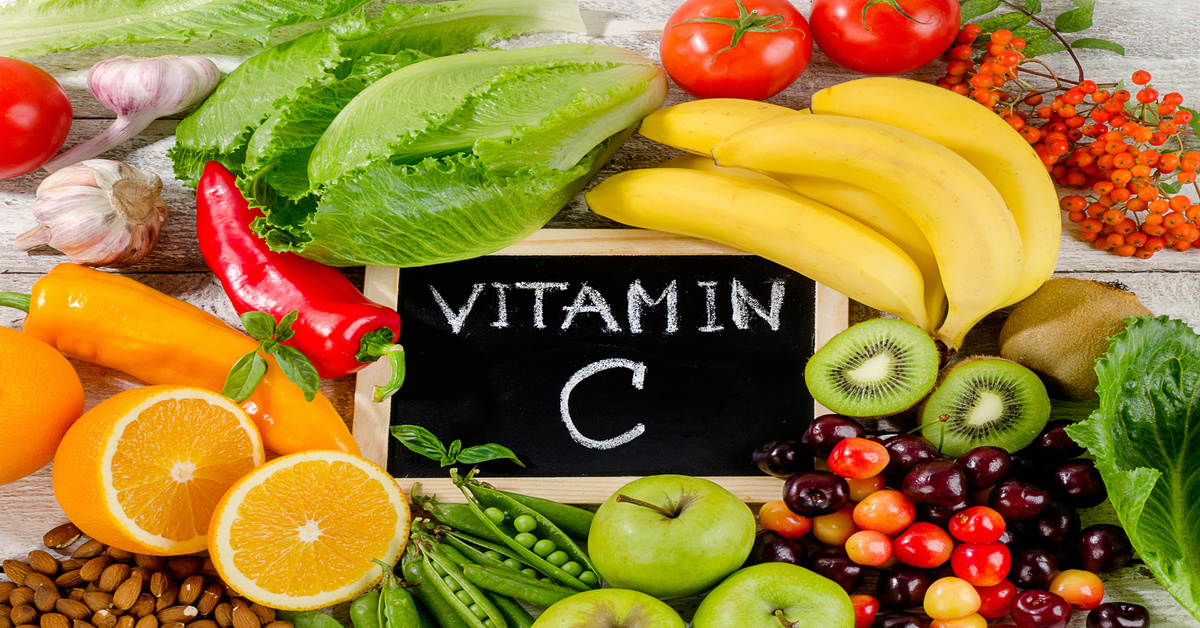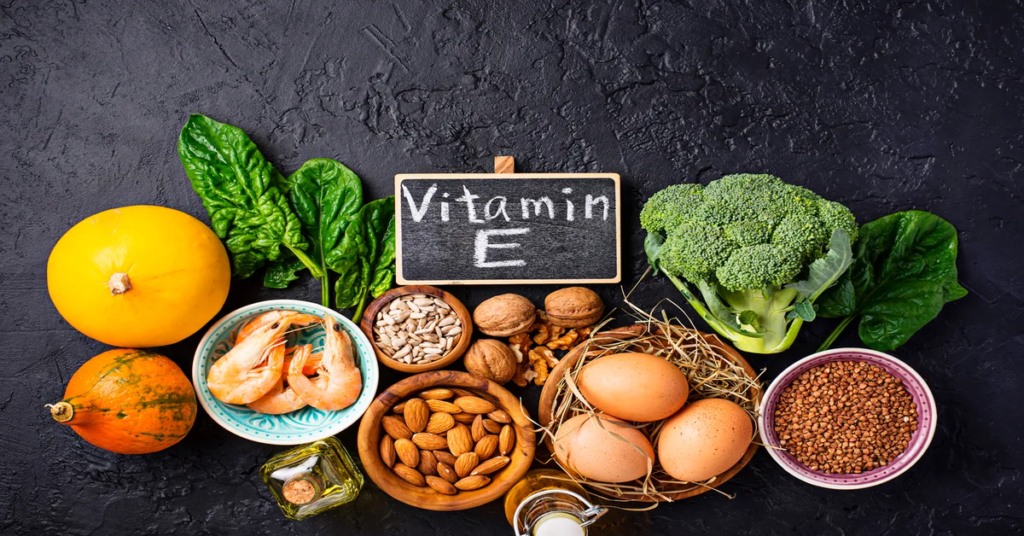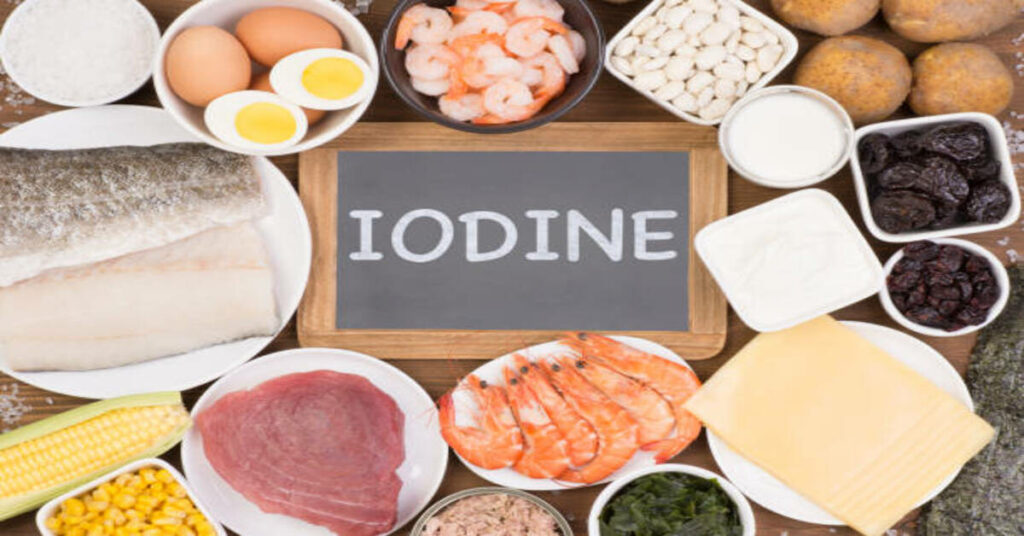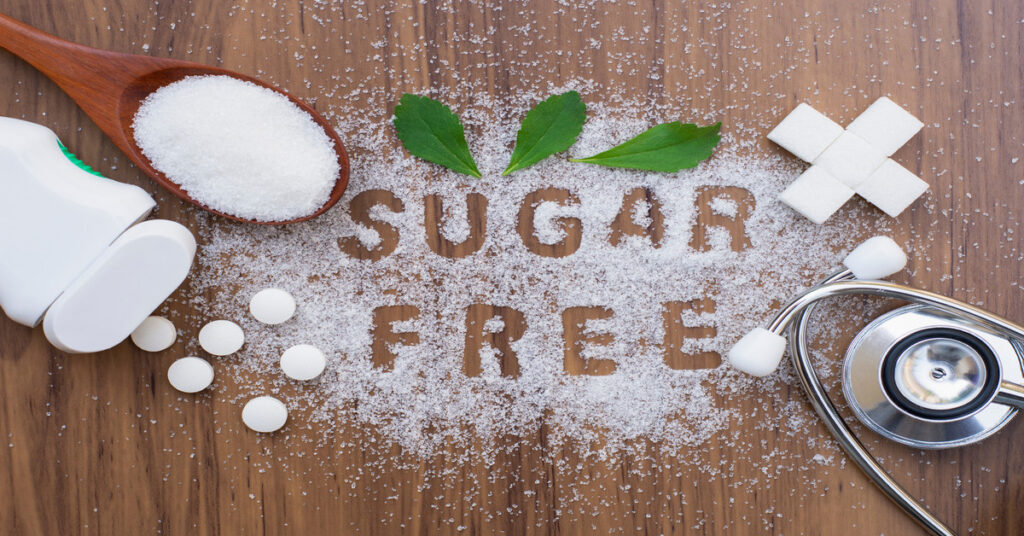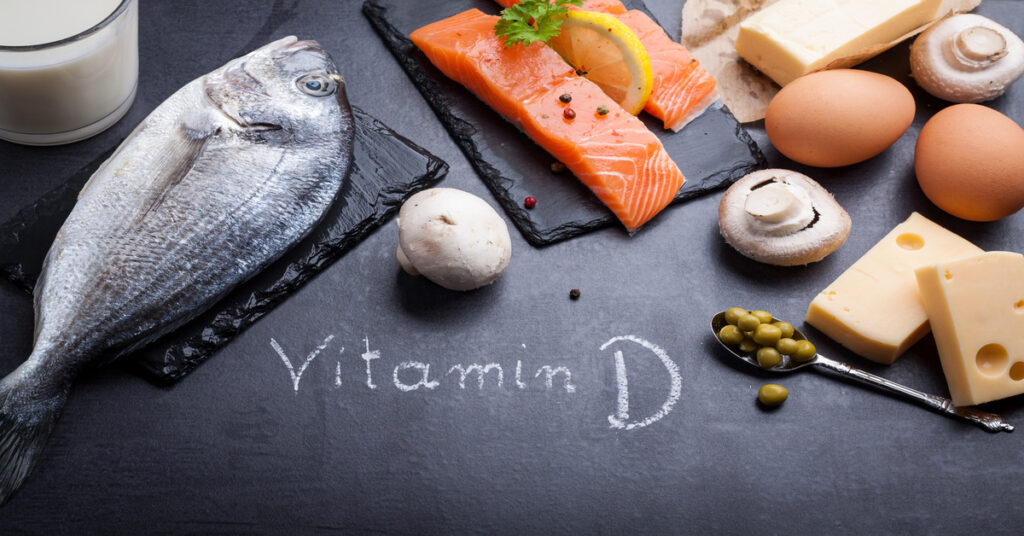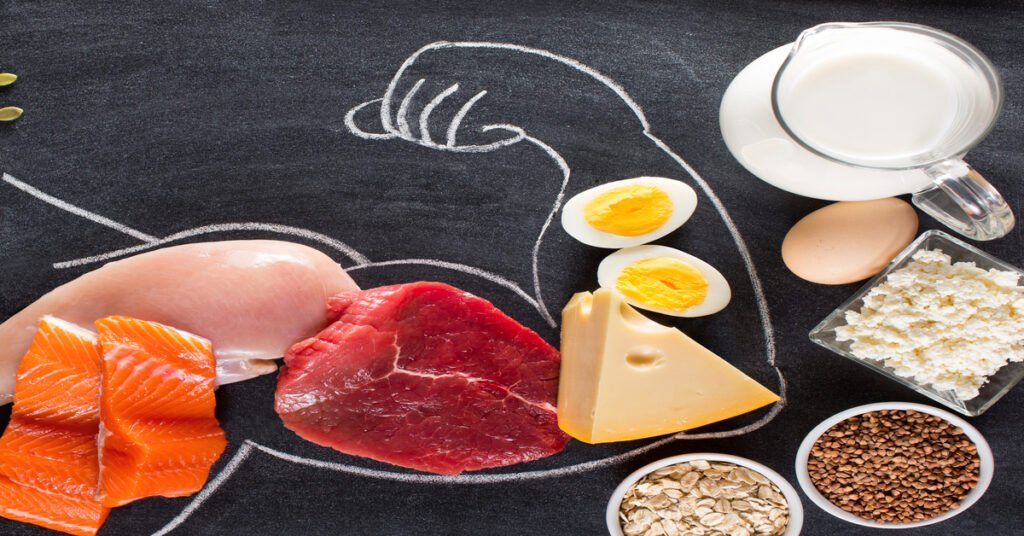VITAMIN C
Vitamin C, also known as ascorbic acid, is a vital nutrient for human health. It plays an essential role in the body’s growth, development, and repair. One of the most well-known benefits of Vitamin C is its antioxidant properties, which help protect the body from damage caused by free radicals. In addition to this, Vitamin C has been linked to a variety of health benefits, including improved immunity and the prevention of infectious diseases.
This article will delve into the benefits of Vitamin C on its antioxidant properties, immunity, and infectious diseases, exploring the latest research and providing practical tips on how to incorporate this essential nutrient into your daily life.
Table of Contents
- Sources & Structure
- Biological Significance
- Supplement Variants & Specifications
- Pharmacology
- Neurology
- Neuroprotection
- Stress Depression
- Dementia & Alzheimer’s
- Cardiovascular Health
- Interactions with Glucose Metabolism
- Cancer
- Exercise & Physical Performance
- Insulin Sensitivity
- Inflammation & Immunology
- Interactions with Hormones
- Interactions with Other Organ Systems
- Pregnancy & Infancy
- Nutrient Interactions
- Safety & Toxicology
- Summary
Sources & Structure
Vitamin C, which is also referred to as L-ascorbic acid, is a crucial nutrient that was initially discovered by Szent-Gyorgyi, Waugh, and King in the years 1932-1935. Haworth and Hirst later synthesized this essential vitamin in 1933. The scientific name for Vitamin C is 2-oxo-L-threo-hexono-1,4-lactone-2,3-enediol. Linus Pauling was one of the main figures who popularized Vitamin C as a preventative measure for the common cold. [1, 2]
Vitamin C is most commonly supplemented because of its potential protection against the common cold and purported anticancer effects. Athletes report using vitamin C for both the antioxidant properties and potential immune support.
Particularly rich sources of Vitamin C include:
Vitamin C appears to stable in food (as the form of L-ascorbic acid) in the pH range of 4-6.
Main Takeaway: Fruits are generally considered the richest food source of Vitamin C, and in Mediterranean countries, they are a primary source of this nutrient in the average diet. On the other hand, in the United States, juices are a significant contributor to the intake of Vitamin C.
Biological Significance
Vitamin C is known to play a role as a cofactor in various bodily processes. This includes proper collagen synthesis, as well as the biosynthesis of L-carnitine (although it is not mandatory) and certain neurotransmitters, specifically catecholamines (dopamine and adrenaline). [1] In the body it maintains an overall pool of around 1,500-2,000mg that can be maintained with 75mg daily intake and saturated with 140mg daily. Other enzymes that Vitamin C is known to positively modulate include those involved in the synthesis of oxytocin, vasopressin, cholecystokinin and α-Melanocyte-stimulating hormone.
Unlike certain animals, such as canines and felines, humans do not have the ability to synthesize Vitamin C. [1] As a result, it is crucial that humans obtain sufficient amounts of this nutrient through their diet. If the body does not receive an adequate amount of Vitamin C, it can lead to a deficiency known as scurvy. [1]
In addition to scurvy, there are various conditions associated with increased oxidation in the body that can result in reduced levels of serum Vitamin C compared to healthy individuals. These conditions include fever and viral infections, stress, alcoholism, smoking [1] and type II diabetes, [1] despite consuming adequate amounts of Vitamin C. Furthermore, people who have recently experienced a myocardial infarction [1] or acute pancreatitis [1] may also experience lower levels of serum Vitamin C, although this typically normalizes after some time.
Supplement Variants & Specifications
The term “Vitamin C” on a label may actually refer to one of five different molecules. These are: L-Ascorbic Acid (actual vitamin C), Sodium-L-Ascorbate, Potassium-L-Ascorbate, Calcium-L-Ascorbate, and L-Ascorbyl-6-Palmitate. All of them are capable of functioning as a vitamin within the body.
While all five of the molecules that can act as Vitamin C in the body are effective in this role, they do differ in some ways. For instance, research suggests that Sodium Ascorbate and Ascorbic Acid (which is the primary dietary form) may have pro-oxidative effects on DNA, while Calcium Ascorbate appears to have a neutral effect. Additionally, Ascorbyl-6-Palmitate has been found to be protective of DNA. Because of this, Ascorbyl-6-Palmitate is used often in antioxidant supplements but does not have water solubility.
Ester-C is a type of Vitamin C supplement that may be beneficial for people who are sensitive to acidic foods. However, while it is marketed as having certain advantages over standard Vitamin C, the supposed benefits of Ester-C have not been extensively proven.
Pharmacology
Typical concentrations of Vitamin C circulating in the body, in the form of L-ascorbic acid, range from 40 to 60μM. In contrast, the reduced form of dehydroascorbate is present in concentrations around 2μM, [1] which may be due to its short half-life of only 2 to 6 minutes. At concentrations below 70μM, the half-life of ascorbate is much longer, lasting between 8 and 40 days. However, when serum concentrations of ascorbate exceed this threshold, which can occur with supplementation of over 1,000mg of Vitamin C, the half-life is reduced to just 30 minutes.
Supplemental ascorbate follows a dual phase pharmacokinetic profile. When serum levels are within the physiological range, the body regulates ascorbate through resorption in the kidneys, which occurs via sodium dependent vitamin C transporters. As a result, the half-life of ascorbate is prolonged, lasting between 8 and 40 days.
When orally consumed, a dose of 1,250mg vitamin C can increase plasma vitamin C levels to approximately 134.8+/-20.6μM. If taken every four hours at a dose of 3,000mg in line with megadosing therapy for the common cold, plasma vitamin C levels can exceed 220μM.
When 500mg Vitamin C is taken twice daily, it seems to enhance the expression of the transporter responsible for mediating the uptake of vitamin C in skeletal muscle (SVCT2). This results in an increase in Vitamin C concentrations after one week, which can be maintained for over 42 days of supplementation.
Vitamin C undergoes metabolic processes that result in the production of a free radical, which serves as a sacrificial and protective antioxidant. [1] The free radical is then transformed into dehydroascorbic acid, which subsequently produces oxalic acid through 2,3-diketogulonic acid. [1]
Neurology
Vitamin C has the ability to cross the blood-brain barrier, [1, 2, 3] but the rate at which it does so is limited. It is important to note that Vitamin C must be in the oxidized form of dehydroascorbate to cross the blood-brain barrier. The primary mode of Vitamin C entry into the brain occurs via cerebrospinal fluid. [1, 2, 3]
Vitamin C seems to be in highest concentrations in the hippocampus, cerebellum, and frontal/parietal cortices. [1, 2]
In isolated rat synaptic vesicles, vitamin C appears to cause acetylcholine release with an EC50 value of 2-2.5µM and appears to be dependent on calcium as it was inhibited with EGTA.
Neuroprotection
Vitamin C has potential neuroprotective effects against excitotoxicity, [1] which is caused by excessive cell stimulation. One of the ways it achieves this is by inhibiting the NMDA receptor. [1] However, this is not a unique role for Vitamin C, as other antioxidants may also contribute to this effect.
Stress Depression
After exposure to perceived stressors, both physical and mental, [1] there is evidence of increased oxidative stress within cells, which can lead to cellular death.
There is evidence suggesting that Vitamin C may have antidepressant effects, although the exact mechanism is not fully understood. It is hypothesized that Vitamin C works via **potassium channels**, [1] which is a similar mechanism to many traditional antidepressant medications. Additionally, there appears to be a synergistic effect when Vitamin C is combined with potassium channel blockers.
Preliminary evidence in humans to support antidepressant effects in humans, with the lone controlled trial having a notable conflict of interest.
Dementia & Alzheimer's
The risk of dementia seems to be inversely associated with serum levels of Vitamin C, as evidenced by an odds ratio of 0.29. This relationship held even after adjusting for potential confounders such as school education, dietary supplement intake, smoking, body mass index, and alcohol consumption.
Vitamin C and oxidative kinetics appear to be altered in persons with Alzheimer’s disease. [1]
The evidence regarding the effectiveness of vitamin C in aiding with neurological conditions is mixed. While it may have a neuroprotective effect, it does not appear to aid in rehabilitation. Additionally, other antioxidant compounds may also provide similar benefits. [1]
Cardiovascular Health
The antioxidant properties of Vitamin C prevent a rapid decline of nitric oxide, which promotes nitric oxide production. [1, 2]
This is not a unique mechanism of action, and other potent antioxidants such as melatonin [1] have been demonstrated to act similarly.
The catabolism of cholesterol involves microsomal 7α-hydroxylation which is a rate-limiting step, and Vitamin C is required for this process. A deficiency in Vitamin C can lead to excess cholesterol in the liver and a higher risk of gallstones. [1, 2]
The retention of cholesterol due to reduced elimination, which results from a deficiency in Vitamin C, is also a risk factor for cardiovascular diseases, particularly atherosclerosis. [1]
Interactions with Glucose Metabolism
Vitamin C has been suggested to have a protective effect on pancreatic beta-cells. However, when supplemented with glucose, it may cause a temporary state of insulin resistance by elevating circulating glucose levels and inhibiting insulin secretion.
There is some evidence that vitamin C supplementation may have a slight effect in reducing blood glucose and insulin levels in individuals with type 2 diabetes.
Cancer
High doses of vitamin C inhibit a key enzyme in the glycolytic pathway that may lead to selective destruction of certain types of cancer cells. [1, 2]
Exercise & Physical Performance
Vitamin C is easily absorbed and stored in skeletal muscle tissue, [1] where it is believed to provide antioxidant protection and aid in the production of carnitine and collagen.
According to one study, Vitamin C supplementation was found to decrease the production of the pro-inflammatory cytokine IL-6 from skeletal muscle in response to exercise. However, there are mixed findings on the role of IL-6 in exercise adaptation, [1, 2] as it may also play a role in increasing fat oxidation. [1, 2, 3]
Taking supplemental vitamin C in the range of 1,500-2,000mg before short-duration exercise can reduce the increase in cortisol levels. However, it does not seem to have a significant impact on immune responses to exercise.
Supplemental vitamin C has different effects on strenuous and prolonged exercise, such as marathons or skiing, compared to short-duration exercise, as it increases cortisol rather than decreasing it. [1] However, this type of exercise has been associated with a reduction in the frequency of colds with supplemental vitamin C. [1]
In a study where 400mg of Vitamin C was administered in combination with 264mg of Vitamin E, no significant improvement in Delayed Onset Muscle Soreness (DOMS) was observed compared to a placebo.
In healthy men, taking a mixed antioxidant supplement containing 400mg of vitamin C and 286mg of vitamin E for six weeks does not show significant improvement in reducing exercise-induced power output decline during the recovery phase compared to a placebo.
The impact of vitamin C on endurance performance is uncertain, as research has produced mixed results ranging from potential benefits to potential drawbacks. [1] One study that reported a negative effect on endurance performance attributed this outcome to a decrease in mitochondrial biogenesis.
Insulin Sensitivity
Inflammation & Immunology
The majority of studies use vitamin C dosages between 200mg and 2,000mg. While this range of dosages does not appear to be effective in preventing or reducing the incidence of the common cold, it does appear to slightly decrease its duration. [1] However, in athletic populations, there are more significant benefits, [1] with the risk of the common cold being reduced by up to 50%.
Currently, there is no available human evidence, but Vitamin C supplementation shows potential in its ability to destroy drug-resistant tuberculosis bacteria.
Interactions with Hormones
The relationship between vitamin C and cortisol appears to be bidirectional, with an increase in cortisol levels when vitamin C acts as a prooxidant [1] and a decrease when it acts as an antioxidant. [1] The presence of vitamin E does not seem to have a significant effect on the actions of vitamin C.
There is some evidence to suggest that vitamin C, along with other antioxidants, may have protective effects on testicular function. [1, 2, 3, 4, 5] When testicular function is impaired, testosterone concentrations can decrease, and preserving testicular function may help maintain testosterone concentrations. However, it’s important to note that this does not mean that excessive intake of vitamin C can increase testosterone levels beyond normal levels.
Interactions with Other Organ Systems
Men who take higher doses of Vitamin C (1,000mg) appear to be at a greater relative risk (approximate doubling) of forming kidney stones than do persons who are not deficient in vitamin C but who do not supplement.
To synthesize noradrenaline from dopamine and subsequently adrenaline from noradrenaline, vitamin C acts as an essential cofactor. Scurvy, which is characterized by fatigue, may be associated with a deficiency in vitamin C and reduced catecholamine secretion. [1, 2]
The production of noradrenaline from dopamine in the adrenals is increased in a dose-dependent manner by vitamin C until it reaches a concentration of around 0.5mM, after which the effect plateaus. This concentration is believed to be close to physiological levels already, as increasing vitamin C intake beyond this point does not appear to lead to further increases in urinary catecholamines.
Pregnancy & Infancy
Vitamin C is essential for the cognitive development of infants during pregnancy, [1] and pregnant and lactating women require higher dietary intake of Vitamin C. These increased needs can be met through a balanced diet rich in Vitamin C. A deficiency of Vitamin C during pregnancy and lactation, although unlikely in humans, may lead to cognitive impairment in the offspring.
Nutrient Interactions
Vitamin C has the ability to protect and preserve Vitamin E, thereby reducing lipid peroxidation. [1] This is achieved through the oxidation of Vitamin C, which allows it to play a sacrificial role and prevent the oxidation of Vitamin E. [1] When Vitamin C and Vitamin E are incubated together, they work synergistically to reduce lipid peroxidation. [1]
It may increase the absorption rates of zinc and iron, [1] which would be of interest to those with anemia. It also has been noted to reduce the inhibitory effects of phytic acid but not tannins.
When nitrates (small molecules found in leafy green vegetables, most popularly in Beetroot and are able to convert into nitric oxide) combine with nitrites, they produce nitric oxide, which can react with amines to form nitrosamines. Nitrosamines are known to be carcinogenic, and this is a particular concern with meat products because the heme in meat increases the reaction rate. However, there is generally less concern about nitrosamine formation in vegetables or water.
Safety & Toxicology
Vitamin C is considered safe, although high doses (2,000-6,000mg) may lead to diarrhea. [1] This is because Vitamin C is almost entirely absorbed at low levels of dietary intake (around 100mg) and absorption progressively decreases at doses above 500mg.
One meta-analysis of four studies reported a 16% increased risk of dental erosion with vitamin C supplementation from chewable tablets.
A case study has reported a link between daily consumption of ‘several grams of vitamin C’ and oxalate nephrotoxicity, a toxic kidney condition caused by excessive oxalate concentrations in the kidneys. Vitamin C is a known contributor to oxalate nephrotoxicity, as clinical injections of Vitamin C have been shown to cause this condition. [1, 2, 3, 4]
Although the risk of oral Vitamin C supplementation appears to be low based on its long history of safe usage and the limited information available in a single case study, intravenous administration of Vitamin C appears to pose a higher risk. Therefore, it is recommended to avoid intravenous Vitamin C supplementation unless under medical supervision.
Summary
Tldr; Fruits are generally considered the richest food source of Vitamin C, and in Mediterranean countries, they are a primary source of this nutrient in the average diet. On the other hand, in the United States, juices are a significant contributor to the intake of Vitamin C.
Unlike certain animals, such as canines and felines, humans do not have the ability to synthesize Vitamin C. As a result, it is crucial that humans obtain sufficient amounts of this nutrient through their diet. If the body does not receive an adequate amount of Vitamin C, it can lead to a deficiency known as scurvy.
In addition to scurvy, there are various conditions associated with increased oxidation in the body that can result in reduced levels of serum Vitamin C compared to healthy individuals. These conditions include fever and viral infections, stress, alcoholism, smoking, and type II diabetes, despite consuming adequate amounts of Vitamin C. Furthermore, people who have recently experienced a myocardial infarction or acute pancreatitis may also experience lower levels of serum Vitamin C, although this typically normalizes after some time.
The term “Vitamin C” on a label may actually refer to one of five different molecules. These are: L-Ascorbic Acid (actual vitamin C), Sodium-L-Ascorbate, Potassium-L-Ascorbate, Calcium-L-Ascorbate, and L-Ascorbyl-6-Palmitate. All of them are capable of functioning as a vitamin within the body.
The risk of dementia seems to be inversely associated with serum levels of Vitamin C.
The antioxidant properties of Vitamin C prevent a rapid decline of nitric oxide, which promotes nitric oxide production. A deficiency in Vitamin C can ead to excess cholesterol in the liver and a higher risk of gallstones as well as cardiovascular diseases, particularly atherosclerosis.
Vitamin C has been suggested to have a protective effect on pancreatic beta-cells. However, when supplemented with glucose, it may cause a temporary state of insulin resistance by elevating circulating glucose levels and inhibiting insulin secretion. There is some evidence that vitamin C supplementation may have a slight effect in reducing blood glucose and insulin levels in individuals with type 2 diabetes.
High doses of vitamin C inhibit a key enzyme in the glycolytic pathway that may lead to selective destruction of certain types of cancer cells.
Vitamin C is easily absorbed and stored in skeletal muscle tissue, where it is believed to provide antioxidant protection and aid in the production of carnitine and collagen. Supplementation has been found to decrease the production of the pro-inflammatory cytokine IL-6 from skeletal muscle in response to exercise. However, there are mixed findings on the role of IL-6 in exercise adaptation, as it may also play a role in increasing fat oxidation.
Supplementing 400mg of Vitamin C in combination with 264mg of Vitamin E, shows no significant improvement in Delayed Onset Muscle Soreness (DOMS), nor does it reduce exercise-induced power output decline during the recovery phase.
500mg vitamin C taken twice daily along with 400 IU vitamin E can counteract the exercise-induced increase in insulin sensitivity among both trained and untrained individuals.
Dosages used in most studies are between 200mg and 2,000mg and even though they do not appear to be effective in preventing or reducing the incidence of the common cold, they slightly decrease its duration. In athletic populations, there are more significant benefits, with the risk of the common cold being reduced by up to 50%.
There is some evidence to suggest that vitamin C, along with other antioxidants, may have protective effects on testicular function. When testicular function is impaired, testosterone concentrations can decrease, and preserving testicular function may help maintain testosterone concentrations. However, it’s important to note that this does not mean that excessive intake of vitamin C can increase testosterone levels beyond normal levels.
Men who take higher doses of Vitamin C (1,000mg) appear to be at a greater relative risk (approximate doubling) of forming kidney stones than do persons who are not deficient in vitamin C but who do not supplement.
Vitamin C is essential for the cognitive development of infants during pregnancy, and pregnant and lactating women require higher dietary intake of Vitamin C.
Vitamin C may increase the absorption rates of zinc and iron which would be of interest to those with anemia.
Even though Vitamin C is considered safe, high doses (2,000-6,000mg) may lead to diarrhea. Although the risk of oral Vitamin C supplementation appears to be low based on its long history of safe usage and the limited information available in a single case study, intravenous administration of Vitamin C appears to pose a higher risk. Therefore, it is recommended to avoid intravenous Vitamin C supplementation unless under medical supervision.

